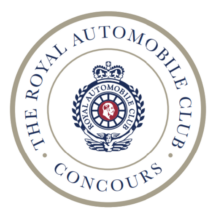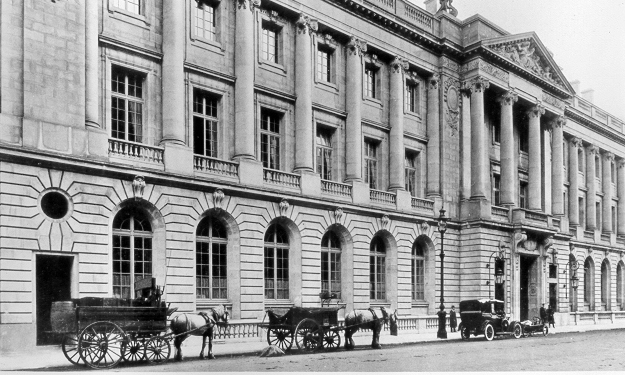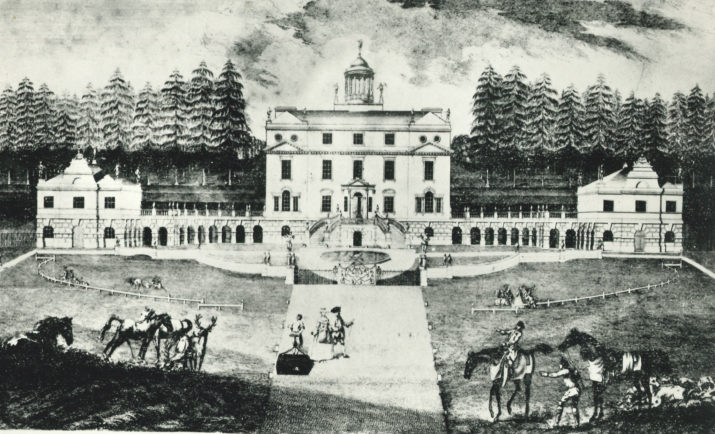History of the Club
Pall Mall
Founded in 1897 by Frederick Simms, the history of the Royal Automobile Club mirrors the history of the motor car in the United Kingdom. Since then, the Club has promoted the interests of the motorist, and for many years functioned as the governing body of British motorsport.
Originally the Automobile Club of Great Britain (and later Ireland), the Club was founded to support the growth of the automobile across the United Kingdom. His Majesty King Edward VII decreed in 1907 that the ACGBI should be renamed the ‘Royal Automobile Club’; since then, his profile has appeared on the Club’s badge.
The ACGBI’s first headquarters were at 4 Whitehall Court, remaining there until 1902, when it moved to 119 Piccadilly. By 1907 a larger membership meant a new clubhouse was needed; the Pall Mall clubhouse opened in 1911, designed by architects Charles Mewès and Arthur Davis, who had previously designed the Ritz hotels in Paris and London.
In 1900, the Club organised the Thousand Mile Trial: a large group of cars travelled the country to demonstrate the reliability of the motor car to the public. In the years that followed, the Club campaigned for the 1903 Motor Act, which increased speed limits and removed other restrictive legislation. The Club set up its ‘Associate’ section – later RAC Motoring Services – in the same year, and as early as 1905, had begun conducting driving tests and issuing driving licences, a responsibility later assumed by the government.
The Club organised the first Tourist Trophy race in 1905; it remains the oldest motorsport trophy in the world. The Club organised the first British Grand Prix, at Brooklands in 1926, and in 1930, organised the London to Brighton Veteran Car Run for pre-1905 cars, an event that continues today as the world’s longest-running motoring event. In 1950, the Club arranged the Grand Prix d’Europe at Silverstone in 1950, marking the beginning of Formula One.
With a total membership of 17,000, today’s members can enjoy a great number of activities, most notably squash and golf. Popular Club activities also include photography, backgammon, and even a choir. Staying true to its founders, the Club’s Motoring identity remains intact, with the Motoring Team and Committee organising over 70 events per year. These include the Royal Automobile Club Historic Awards, the St James’s Motoring Spectacle, and the RM Sotheby’s London to Brighton Veteran Car Run, the world’s longest-running motoring event.
Woodcote Park
Woodcote Park is mentioned in the 1086 Doomsday Book, originally owned by the Abbey of Chertsey. Generations of the Marston and Mynn families then owned it from the mid-15th century until Richard Evelyn acquired it in 1648 and built the estate’s main mansion, which survived until the 20th century. The Royal Automobile Club bought Woodcote Park in 1913, from Herbert Brooks, a director of the Bank of England.
Woodcote Park had been purchased for members to drive down from London to enjoy its many sporting and leisure facilities. Golf has always been the main attraction; the Club offers two full 18-hole courses, called the ‘Old’ and ‘Coronation’ courses.
In 1934, the main clubhouse was destroyed by fire. Mewès and Davis – the architects renowned for the Royal Automobile Club’s Pall Mall clubhouse – were commissioned to rebuild it, and the new clubhouse opened its doors in 1936.
By the late 1970s, Woodcote Park was in considerable need of investment and came close to being sold altogether. A programme of renovation and upgrades was instigated in the 1980s; including the Cedars Sports complex in 1989.
Woodcote Park, set in 350 acres of prime Surrey countryside, is today thriving once again. Club members and their guests can enjoy many motoring events, as well as a range of sporting pursuits, including swimming, tennis, squash, running, and cycling. The Walled Garden Family Facility, opened in 2021, caters for all ages and generations of Club members, with its terraced café, multi-use games areas, and swimming pool.


